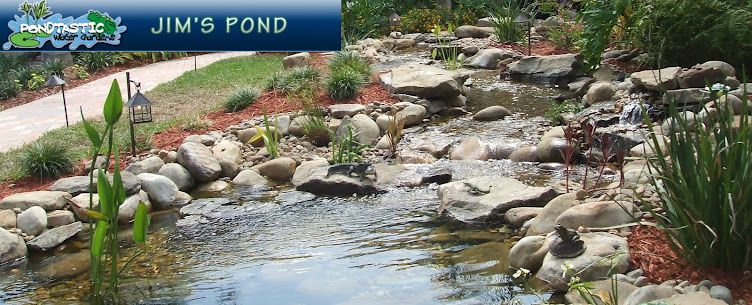Lets have a quick discussion about water quality and the effects of poor water quality.
pH- my last blog went into detail about pH but we can cover the basics here.
*pH is the measure of acidity or alkalinity in the water. A healthy pond depends on a balanced pH. The acceptable range for fish ponds is between 6.8 and 7.6.
*low pH is normally caused by lack of oxygen (surface agitation) build up of carbon dioxides and/or too many fish.
*high pH is normally caused by cement or limestone leaching into the water or a high pH water source.
Ammonia- toxic waste from animals ( fish, birds etc )
*a healthy pond has NO detectable ammonia.
*a healthy pond uses a biological filtration to remove the ammonia. By adding a nitrifying bacteria that uses the ammonia and a food source.
Nitrites- toxic solid waste from animals (fish, frogs, birds etc )
*nitrites left unchecked turn into ammonia (see above) and become toxic
*nitrites is converted (by the nitrifying bacteria)into nitrates which is consumed by your plants for food.
*overfeeding, overstocking, dead plant material are some of the more common causes of high nitrite levels.
Phosphate- dead organics in the pond
*most common build up of phosphate comes from use of an algaecide product
*dead algae, fish waste, decaying organics are also among leading causes
*sometimes phosphates are used in our water treatment plants to prevent corrosion of pipes
*a healthy pond should not register any Phosphate level
Soooo do you know more than you did before you read this? I hope so and I hope you have questions...
The key to every item listed here is Beneficial Bacteria. The addition and dosage of a QUALITY beneficial bacteria can make the difference between a healthy pond and a lot of heartache.
Wednesday, April 28, 2010
Tuesday, April 13, 2010
The Mysteries of pH
I know the title sounds like a best selling murder mystery title but we are really going to talk about the pH readings in your pond and how they change, what changes it and what you need to be worried about.
First let me clarify that i am not a big advocate of " Micro Managing " your pond. I mean I don't want you out there everyday doing all kinds of water tests and keeping a journal of your findings.... that doesn't sound relaxing to me at all.
The questions about pH start every year about this time. When our weather turns warm and a lot of ponds experience an algae bloom. Algae is a plant right? Remember photosynthesis? During the daylight, plants produce oxygen directly from the carbon dioxide dissolved in the water and energy obtained from the sunlight.... this is also known as photosynthesis.
Without getting too technical ( talking about alkaline carbonates and bicarbonates ) we will just say that is causes the pH to fluctuate ... the more algae = the more fluctuation.
pH is not generally a problem but it can and usually does have an effect on the toxicity of ammonia.
The problem comes in when we don't understand the reasons behind our pH levels and instead of fixing a problem in the pond we want to add in a scoop of this or a scoop of that.
We want you to understand that it is the organics that build up in the pond ( ie fish waste) , the heat, and the amount of algae in your pond that is the culprit here. We need to remove the waste from the pond by both biological filtration ( adding in beneficial bacteria ) and physical removal ( cleaning your filters ).
We have found that it is a complete waste of money and time to try and artificially control pH in a pond.
Learn anything? Have questions? Stop in and we can go into more detail !
First let me clarify that i am not a big advocate of " Micro Managing " your pond. I mean I don't want you out there everyday doing all kinds of water tests and keeping a journal of your findings.... that doesn't sound relaxing to me at all.
The questions about pH start every year about this time. When our weather turns warm and a lot of ponds experience an algae bloom. Algae is a plant right? Remember photosynthesis? During the daylight, plants produce oxygen directly from the carbon dioxide dissolved in the water and energy obtained from the sunlight.... this is also known as photosynthesis.
Without getting too technical ( talking about alkaline carbonates and bicarbonates ) we will just say that is causes the pH to fluctuate ... the more algae = the more fluctuation.
pH is not generally a problem but it can and usually does have an effect on the toxicity of ammonia.
The problem comes in when we don't understand the reasons behind our pH levels and instead of fixing a problem in the pond we want to add in a scoop of this or a scoop of that.
We want you to understand that it is the organics that build up in the pond ( ie fish waste) , the heat, and the amount of algae in your pond that is the culprit here. We need to remove the waste from the pond by both biological filtration ( adding in beneficial bacteria ) and physical removal ( cleaning your filters ).
We have found that it is a complete waste of money and time to try and artificially control pH in a pond.
Learn anything? Have questions? Stop in and we can go into more detail !
Subscribe to:
Posts (Atom)


